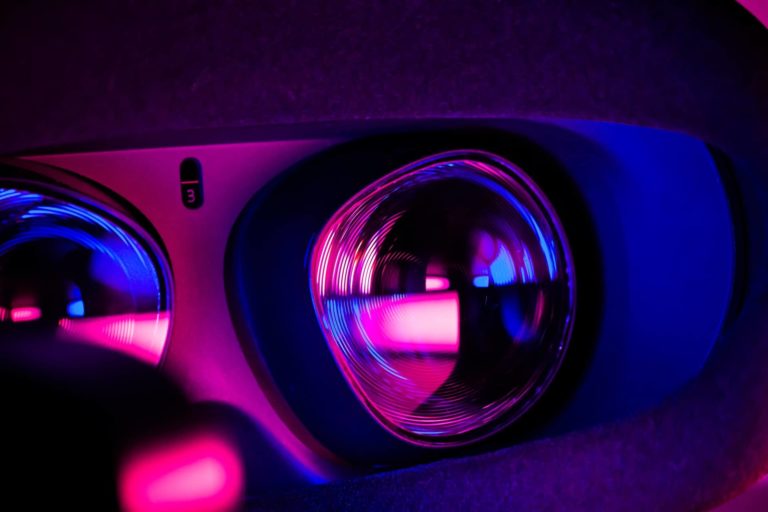
X R is a rapidly growing and evolving landscape. Revenue in this segment is expected to reach $70 billion by 2027.
As XR technologies advance with continued spending and investments, it’s important that these devices and systems embrace inclusive design to ensure accessibility for all people going forward.
Spatial computing has already come a long way with hardware advancements, such as the recent inflections in smart glasses. But its full potential has yet to be reached. That said, as new tech startups emerge, we are seeing greater diversity and inclusion represented in new technologies, which signals a promising future if these trends continue.
Accessibility in XR
XR holds great potential for enhancing accessibility in numerous ways. AR, VR and mixed reality (MR) can all improve communication, engagement, and learning by providing an immersive environment that might have otherwise been inaccessible to certain people depending on limitations based on where they live, their age, and their physical and cognitive abilities.
Those with accessibility challenges in the classroom or the workspace, for instance, can more easily overcome obstacles with certain XR technologies. For example, XR tools can dynamically enhance settings for those with visual impairments or enable walkability, such as touring a building, for someone who uses a wheelchair.
XR also plays an important role in DEI initiatives. DEI is about creating more diverse and inclusive workplaces. This is not only to benefit the employees themselves but also because companies that employ more diverse workforces also tend to be more innovative and successful. Having more diverse perspectives and skill sets enables companies to create products and services that are more accessible to a wider audience.
By creating spaces that foster belonging and accessibility, XR technologies act as powerful tools that can significantly enhance DEI. Women are often under-represented in tech, for example, which is why it’s important to create more inclusive workspaces and improve DEI by getting more women to work in the immersive technology space.
How Can We Encourage More Women to Work in Immersive Technology?
Startups Making XR More Accessible
In the past few years, numerous startups have emerged that are making waves in the XR and accessibility space, some of which include:
- VerityXR uses VR and AI to provide rehab solutions for patients dealing with chronic pain.
- SiliconHagen provides VR, AR, and XR solutions to improve accessibility in education, the workplace, healthcare, and more.
- Stock Knowledge uses XR technologies to create environments that adapt to each student’s learning style and pace.
- XR Navigation created Audiom, which they claim to be the world’s most inclusive map viewer.
- Magic Leap’s products make information more accessible and amplify human potential in the workplace, such as the Magic Leap 2, which are AR glasses that blend digital content with real-world environments.
- XRHealth uses XR technology to create therapeutic applications to help treat a wide range of physical, emotional, and neurocognitive symptoms.
In addition to the startups that already exist, there are also organizations that offer resources and support to help more startups who are interested in creating accessible and inclusive XR technologies. Some of these organizations include the XR Association, XR Access, and Inclusive XR Collaboratory.
The Future of Accessible XR Innovation
There are many avenues for accessible XR to explore, but one of the most intriguing is the world of digital twins. A digital twin is a virtual replica of an object. Currently, digital twins have applications in fields such as structural design, manufacturing, product lifecycle management, and construction, where professionals can use them to run simulations before turning ideas into reality. On the horizon, digital twins could be integrated with XR.
Combining digital twins with VR, for example, would allow an individual with limited mobility to manipulate objects in a virtual environment that is identical to a real one. This would not only enable exploration that was previously impossible, but it could also allow you to take on roles in the professional world that were previously limited to those with full mobility.
Even further, human digital twins may be possible, meaning that people with visual impairments could be able to “see” themselves and do things in virtual spaces with the help of neural implants. Once digital twins are fully integrated with XR applications from startups focused on improving accessibility, we could see a world where virtually no activity is off-limits to individuals with disabilities.
Augmenting Accessibility
While there are still barriers to accessibility, it’s important for those working in the tech space to continue pushing DEI initiatives and break down obstacles. For startups, it’s also important to make accessibility a priority when working on initial or new products. Numerous resources, such as XR Access and the XR Association, can provide startups and tech entrepreneurs with the tools and support they need to create more inclusive and accessible technologies moving forward.
 Indiana Lee is a writer who focuses on emerging tech, wellness, and environmental topics.
Indiana Lee is a writer who focuses on emerging tech, wellness, and environmental topics.






